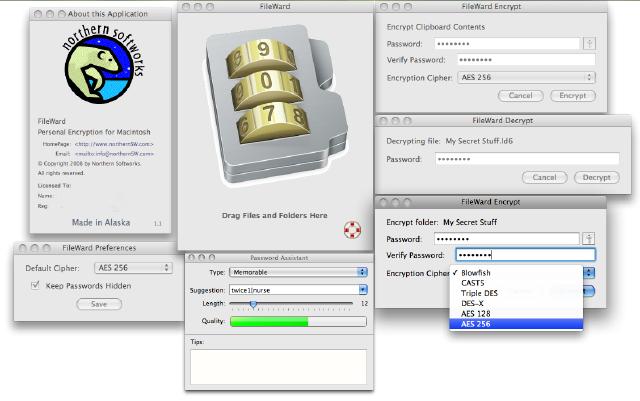
.jpg)

Some have weaknesses or design flaws that could enable an attacker to decrypt data even without knowing the key. First is the design of the algorithm itself. Two factors influence how secure (resistant to being broken) an encryption algorithm is. In the modern computing world, you’re likely to run into at least a half-dozen common ciphers considered especially well-suited for encrypting and decrypting data on your Mac. Over the centuries, countless thousands of encryption algorithms have been developed, ranging from the extremely simple to the breathtakingly elaborate. The chapter from which this article is excerpted explores a variety of different approaches to encrypting some or all of your files.Įncryption Algorithms - An encryption algorithm, also known as a cipher, is a particular method for encrypting data – a sort of mathematical formula that takes the input (sometimes called cleartext), processes it using a secret piece of information (a key), and produces encrypted output (sometimes called ciphertext). Encryption comes in many forms, some of which are almost trivially easy to use, and others that require extra thought and effort.
Fileward des windows password#
The way to keep your data safe while it’s sitting on your hard disk is to encrypt it – to scramble it in such a way that it looks like garbage to anyone without your password or key. Think about it this way: Would it bother you or any of your friends or family if the entire contents of your Address Book were made public? Would you be disturbed to know that a stranger could see years’ worth of your family photos, read all your email, and discover every Web site you’ve visited in the past month? Even the least secretive of us would probably agree that all this sounds pretty creepy, and that we have good reasons to keep private information private. File encryption is of course just one tiny piece of the security puzzle, but it’s worth knowing about if you keep confidential data on your Mac, especially if the computer is ever out of your physical control – which would include being lost or stolen. This article is an excerpt from Chapter 13, “Encrypting and Securely Deleting Files,” reprinted with the kind permission of Wiley. This new book is a compendium of everything a typical (or even advanced) Mac user might want to know on a wide range of security topics. Although Rich Mogull is the real staff expert when it comes to Mac security, I’ve also written a good deal on the subject, including Take Control titles dealing with backups, spam, and passwords. Last year, in between writing Take Control books and Macworld articles, I managed to squeeze in another little project – writing the 900-page “Mac Security Bible,” published in January 2010 by Wiley. #1624: Important OS security updates, rescuing QuickTake 150 photos, AirTag alerts while traveling.#1625: Apple's "Far Out" event, the future of FileMaker, free NMUG membership, Quick Note and tags in Notes, Plex suffers data breach.
Fileward des windows software#
#1626: AirTag replacement battery gotcha, Kindle Kids software flaws, iOS 12.5.6 security fix.
Fileward des windows archive#


 0 kommentar(er)
0 kommentar(er)
